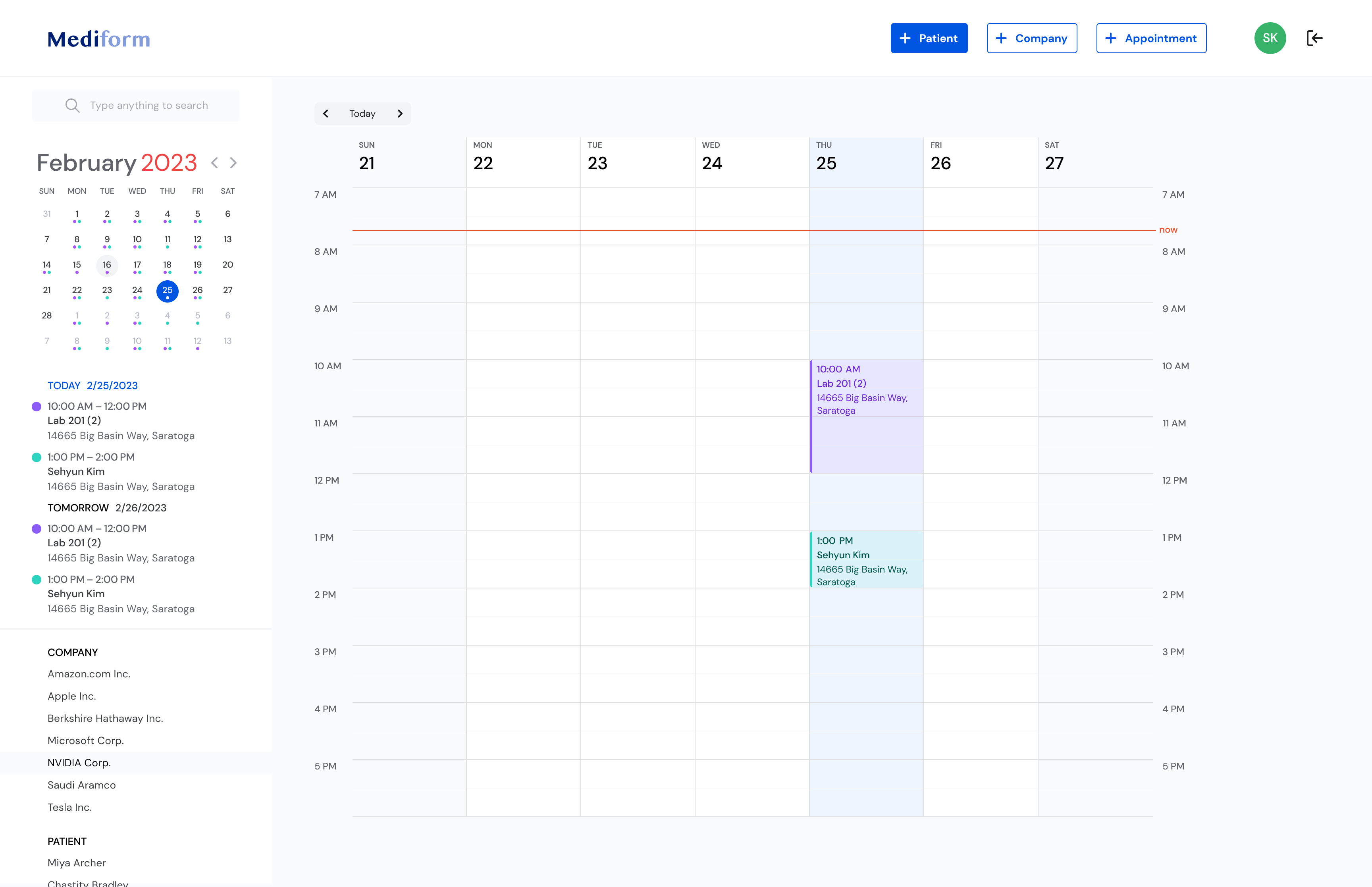Mediform
Mediform was created for client OPC Medical as a scheduling tool for medical clinics and independent medical practices to easily schedule, manage, and review their appointments and medical notes. Part of this process was distilling down the complex medical industry template designed for hospitals and large institutions into something simple and intuitive for smaller practices to interface with. We started by understanding how these large systems worked, and worked directly with independent medical professionals to identify the areas that were over-engineered and bloated for these smaller office use cases. What we arrived at was a digital platform streamlined for real patient data management in small practices, built on a foundation of intuitive interfaces and an approachable learning curve of hours instead of months.
The Problem Space
In order to really understand how to deliver a platform that could provide value to real world users, we first started by looking at the current workflows of independent medical practices in small clinical settings. What kinds of tools were they using? What were the pain points, and what did these practices need for success? What we discovered was that these offices were often fighting against industry software solutions that were poorly designed for their specific use cases, and as a result, were compensating for lack of parity in these tools in one of two ways: either by using a combination of disjointed 3rd party solutions that involved repeated manual entry, or by establishing a set of internal conventions designed to ignore and overwrite the organization and UX of the tools themselves (ie., "There's not enough room in the 'notes' field, so we enter extra notes in the 'prescription' fields and insurance and company info in the extra 'address' fields"). In practice, both of these workarounds were error-prone and inefficient, and without a set of unified tools, reliably ensuring consistency of patient data and convention becomes increasingly difficult as their practices grow.
Scheduling Workflows
In our exploration of the existing space and in conversations with medical professionals, we zeroed in on two primary workflows that needed to improve to give smaller clinics the right tools for managing their practices. The first of these was a simplified scheduling workflow that would enable users to schedule appointments, input patient information, and view all of this data in an uncluttered, easy-to-use interface. We wanted this experience to be as intuitive and frictionless as possible, both as a data-entry process and as a calendar-browsing process. We designed the main page featuring the week's appointments as a large interactive calendar module, where scheduling new appointments was as simple as clicking on a time block within the calendar or the '+ Appointment' button in the top menu.

Patient Data Management Workflows
The second workflow we built out was centered around the management of patient data and its associated metadata. In additional to standard patient contact information, OPC Medical needed an additional mechanism to track the relationship between patients and the companies they worked for as a way to manage corporate clinical work. For this, we added an additional data hierarchy to capture this relationship. To facilitate flexibility of data entry, we made it possible to enter related information at the patient, company, and appointment level, meaning that no matter where you started entering data, you could always enter all information, including those at different levels, without ever leaving the current page or losing your progress.

A static navigation menu positioned on the left of all screens provides a quick way to jump to scheduled appointments, companies, or patients. Additionally, we implemented a secure medical documents repository responsible for storing all sensitive medical records, documents, and other resources. Uploading to this repository was possible through the individual patient pages, and these uploads were securely encrypted and then cryptographically tied to each patient record, maximizing anonymity at the database level and ensuring security at the file level.
Security and HIPAA Compliance
Because this project involved personal medical records and was designed to be deployed in clinical settings, strict security practices and protocols were in place to remain in compliance with the guidelines set forth by HIPAA and HITECH standards.
